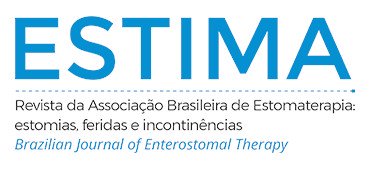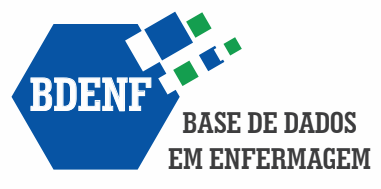Desfecho de ferida operatória em escoliose neuromuscular: curativos convencionais versus terapia por pressão negativa
Resumo
Objetivos Avaliar complicações de ferida operatória comparando coberturas convencionais e Terapia por Pressão Negativa (TPN) de manejo incisional, em cirurgias de coluna. Método: Estudo longitudinal, retrospectivo, exploratório, observacional, com abordagem quantitativa, composta por 50 pacientes de curativo convencional e 50 de TPN de manejo incisional, de 2017 a 2021. A coleta de dados analisou 25 variáveis, e testes estatísticos levaram em consideração um α bidirecional (p-valor) de 0,05 e um intervalo de confiança (IC) de 95%. Resultados: A taxa de complicação foi de 37%, com maior incidência de exsudato e deiscência de pontos. Pacientes com curativo convencional apresentaram mais complicações durante internação (88,24%) do que os pacientes com TPN após alta (50%) (p=0,03); demais variáveis não apresentaram diferença estatística. A amostra controle teve maior frequência de infecção em um ano após o procedimento cirúrgico (14% no convencional e 12,24% na TPN). Conclusão: Pacientes com escoliose neuromuscular possuem altas taxas de complicação de ferida operatória. A TPN apresentou uma redução de infecção de ferida operatória e de alto volume de exsudato em comparação com a amostra de curativo convencional, porém sem diferença estatística. É necessário ampliar o número de pacientes da pesquisa para comprovar a eficácia e a superioridade da TPN de manejo incisional.
Downloads
Métricas
Referências
Wishart BD, Kivlehan E. Neuromuscular scoliosis: when, who, why and outcomes. Phys Med Rehabil Clin N Am. 2021;32(3):547-56. https://doi.org/10.1016/j.pmr.2021.02.007
von der Höh NH, Schleifenbaum S, Schumann E, Heilmann R, Völker A, Heyde CE. Etiology, epidemiology, prognosis and biomechanical principles of neuromuscular scoliosis. Orthopade. 2021 Aug;50(8):608-13. https://doi.org/10.1007/s00132-021-04126-4
Adams AJ, Refakis CA, Flynn JM, Pahys JM, Betz RR, Bastrom TP, et al. Surgeon and caregiver agreement on the goals and indications for scoliosis surgery in children with cerebral palsy. Spine Deform. 2019;7(2):304-11. https://doi.org/10.1016/j.jspd.2018.07.004
Lee NJ, Fields M, Boddapati V, Mathew J, Hong D, Sardar ZM, et al. Spinal deformity surgery in pediatric patients with cerebral palsy: a national-level analysis of inpatient and postdischarge outcomes. Global Spine J. 2022;12(4):610-9. https://doi.org/10.1177/2192568220960075
Muller-Sloof E, de Laat HEW, Hummelink SLM, Peters JWB, Ulrich DJO. The effect of postoperative closed incision negative pressure therapy on the incidence of donor site wound dehiscence in breast reconstruction patients: DEhiscence PREvention Study (DEPRES), pilot randomized controlled trial. J Tissue Viability. 2018;27(4):262-6. https://doi.org/10.1016/j.jtv.2018.08.005
Desvigne MN. Reducing the risk of postoperative problems with panniculectomies using the Prevena PlusTM 125 incisional management dressing. Cureus. 2020; Jul 22;12(7):e9341. https://doi.org/10.7759/cureus.9341
Deldar R, Abu El Hawa AA, Bovill JD, Hipolito D, Tefera E, Bhanot P, et al. Negative pressure wound therapy prevents hernia recurrence in simultaneous ventral hernia repair and panniculectomy. Plast Reconstr Surg Glob Open. 2022 Mar;10(3):e4171. https://doi.org/10.1097/GOX.0000000000004171
Mehkri Y, Hernandez J, Panther E, Gendreau J, Pafford R, Rao D, et al. Incisional wound vacuum-evaluation of wound outcomes in comparison with standard dressings for posterior spinal fusions in traumatic patients. Oper Neurosurg (Hagerstown). 2023 Feb;24(2):138-44. https://doi.org/10.1227/ons.0000000000000477
Naylor RM, Gilder HE, Gupta N, Hydrick TC, Labott JR, Mauler DJ, et al. Effects of negative pressure wound therapy on wound dehiscence and surgical site infection following instrumented spinal fusion surgery-a single surgeon's experience. World Neurosurg. 2020 May;137:e257-e262. https://doi.org/10.1016/j.wneu.2020.01.152
Ayuso SA, Elhage SA, Okorji LM, Kercher KW, Colavita PD, Heniford BT, et al. Closed-incision negative pressure therapy decreases wound morbidity in open abdominal wall reconstruction with concomitant panniculectomy. Ann Plast Surg. 2022 Apr 1;88(4):429-33. https://doi.org/10.1097/SAP.0000000000002966
Mueller KB, D’Antuono M, Patel N, Pivazyan G, Aulisi EF, Evans KK, et al. Effect of incisional negative pressure wound therapy vs standard wound dressing on the development of surgical site infection after spinal surgery: a prospective observational study. Neurosurgery. 2021 Apr;88(5):E445–E451. https://doi.org/10.1093/neuros/nyab040
Phillips MR, English SL, Reichard K, Vinocur C, Berman L. The safety and efficacy of using negative pressure incisional wound VACs in pediatric and neonatal patients. J Pediatr Surg. 2020 Aug;55(8):1470-4. https://doi.org/10.1016/j.jpedsurg.2019.10.011
Tobiano G, Walker RM, Chaboyer W, Carlini J, Webber L, Latimer S, et al. Patient experiences of, and preferences for, surgical wound care education. Int Wound J. 2023 May;20(5):1687‐99. https://doi.org/10.1111/iwj.14030
Pérez-Acevedo G, Torra-Bou JE, PeiroGarcía A, et al. Incisional negative pressure wound therapy for the prevention of surgical site complications in pediatric patients with nonidiopathic scoliosis: a randomized clinical trial. Int Wound J. 2024 Sep;21(9):e70034. https://doi.org/10.1111/iwj.70034
Calderwood MS, Anderson DJ, Bratzler DW, Patchen Dellinger E, Garcia-Houchins S, Maragakis LL, et al. Strategies to prevent surgical site infections in acute-care hospitals: 2022 update. Infect Control Hosp Epidemiol. 2023 May;44(5):695-720. https://doi.org/10.1017/ice.2023.67
Conway B, Tariq G, Nair HKR, Ousey K, Sandy-Hodgetts K, Djohan R, et al. International best practice recommendations for the early identification and prevention of surgical wound complications. London: Wounds International; 2020.
R Core Team. R: A language and environment for statistical computing. Vienna: R Foundation for Statistical Computing; 2020.
Toll BJ, Samdani AF, Burhan Janjua M, Gandhi S, Pahys JM, Hwang SW. Perioperative complications and risk factors in neuromuscular scoliosis surgery. J Neurosurg Pediatr. 2018 Aug;22(2):207-13. https://doi.org/10.3171/2018.2.PEDS17724
Norman G, Goh EL, Dumville JC, Shi C, Liu Z, Chiverton L, et al. Negative pressure wound therapy for surgical wounds healing by primary closure. Cochrane Database Syst Rev. 2020 Jun;6(6):CD009261. https://doi.org/10.1002/14651858.CD009261.pub6
Mascarenhas DC, Nasra M, Tawfik A, Ghazi J, Ishmael T, Therrien PJ, et al. Incisional negative pressure wound therapy does not affect deep surgical site infection rates in neuromuscular scoliosis surgery. Orthopedics. 2023 Nov-Dec;46(6):373-8. https://doi.org/10.3928/01477447-20230329-03
Downloads
Publicado
Como Citar
Edição
Seção
Licença
Copyright (c) 2025 Priscila Sales de Lima, Isadora Cristina de Oliveira Yoneiama , Rebeca Sutto da Silva

Este trabalho está licenciado sob uma licença Creative Commons Attribution 4.0 International License.

























